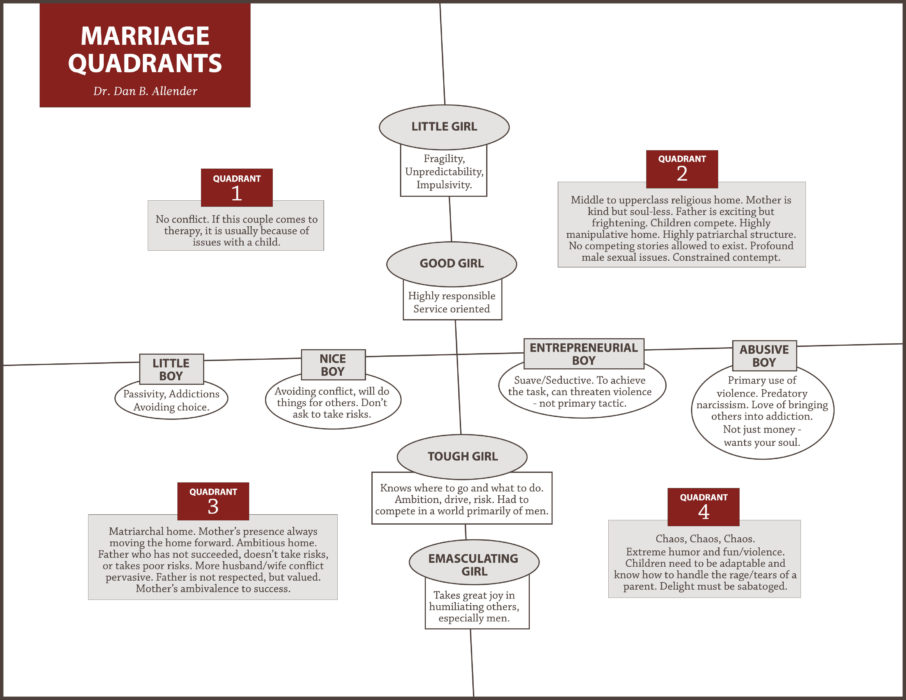The Marriage Quadrants, Part One

This week on the Allender Center Podcast, Dr. Dan Allender launches a new series exploring the theoretical framework of marriage that informs how he engages and works with couples. Dan sets the stage for this series by talking about these “Marriage Quadrants” as a sort of nosology—a system of sorting and classifying patterns and structures that are highly intricate and complex.
“You’ve got an individual, another individual in this paired relationship of intimacy, covenantal commitment, and what comes of it is almost a third being. Every marriage is way more than additive.”
“Every marriage is way more than additive.”
Like any classification system (for example, the Myers-Briggs personality types), it is incomplete; no individual or marriage will fit neatly into a particular category. But since there are so many complex stories and dynamics at play in any one relationship, Dan argues that it is impossible to engage and work with a marriage without having some kind of theoretical structure to offer clarity and direction.
“Part of the dilemma is that when you create organization and structure, you always run the risk of simplifying, of being simplistic. But you also run the risk, if you don’t do that, of being so overwhelmed by the complexity of data that you can’t make first steps. […] You’re always creating some form of artificial limitation. But in that limitation, as long as it’s held softly and generously, it can begin to help us organize complex data.”
The structure Dan presents in this series is based on two primary categories: intimacy—the desire to be affiliated with and close to another—and impact—the need to be individuated and to affect the world around us. When those two core categories are expressed in broken ways, the desire for intimacy yields loneliness, and the desire for impact yields futility.
“This is an effort to try and give language to how that desire for intimacy and impact plays itself out in relationship to another human being whose desire is for intimacy and impact.”
Dan shares how men and women move along the two axes in this graph, forming the four quadrants that represent different types of marriages. (Note that, while these categories might offer insight into any relationship, Dan is speaking primarily to marriage between a man and a woman.)
In upcoming episodes, Dan will dive more deeply into each quadrant, looking at the assets and liabilities they offer, and exploring what it means to engage marriages that fall into these different categories.

